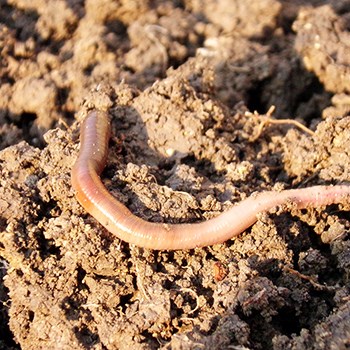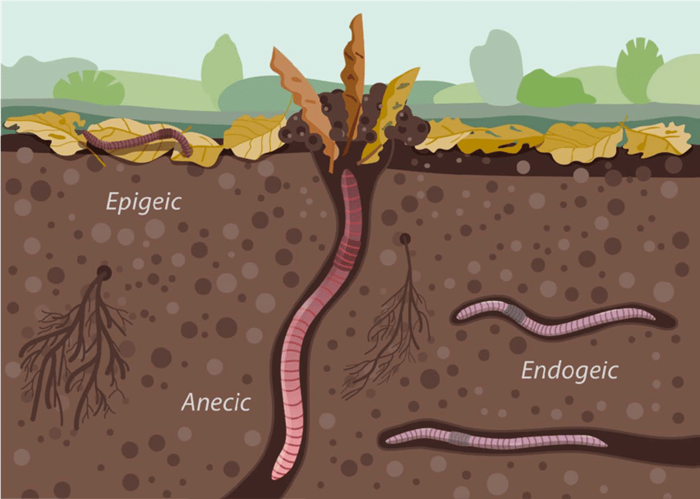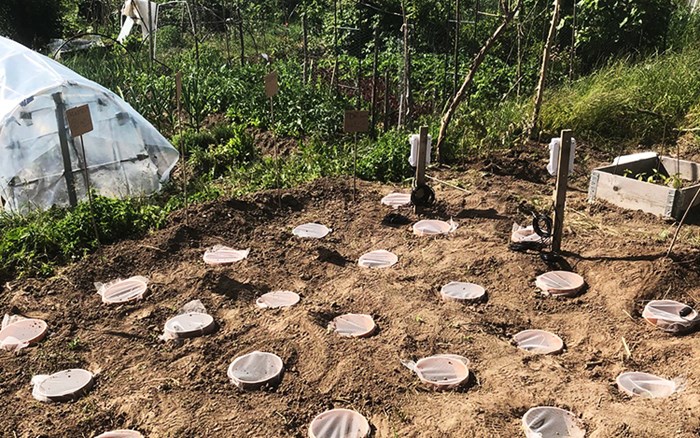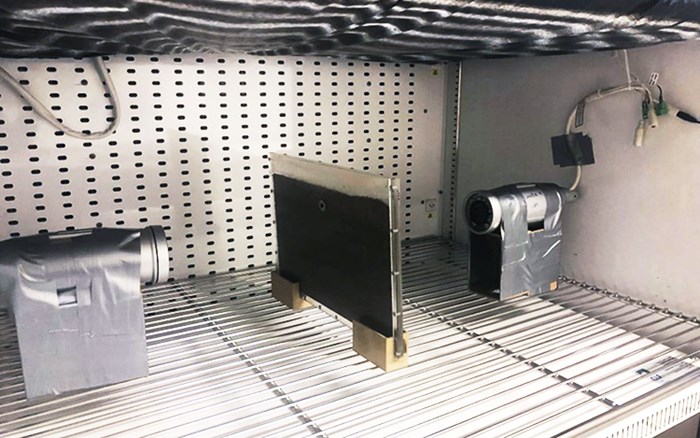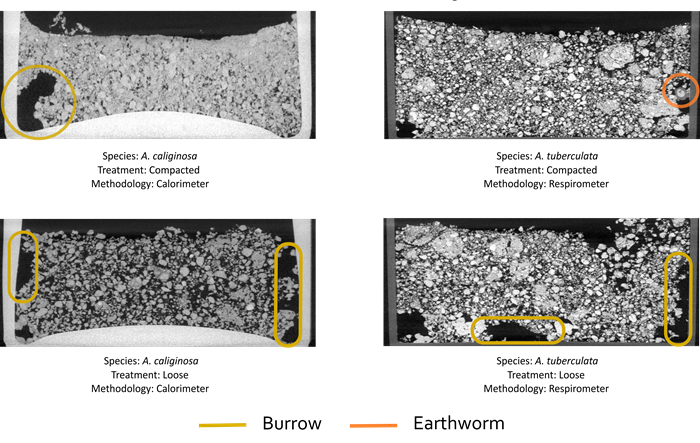Facts:
Earthworms
Earthworms support other soil organisms and soil functions, which makes them important to the soil ecosystem and the ability of the soil to deliver ecosystem services such as producing food. Amongst other things, earthworms mediate nutrient cycling, carbon and climate regulation, as well as water regulation and purification. Earthworms typcially divided into three different ecological groups, Epigeic, Endogeic and Anecic. Recent research has suggested that earthworms have traits from different group, so a species could be epi-anecic, for example.
The epigeic group consists of species that live in the organic soil layer, feed mainly on fresh litter, have small body sizes (1-4 cm), and have a weak muscular system as they do not burrow within the soil.
The endogeic earthworms are inhabitants of the upper mineral soil layers, usually have medium body size (5-15 cm), have a moderately developed muscular system, and create an extensive horizontal burrowing network.
Earthworms in the anecic group move throughout the soil profile, feed mainly on litter in the organic soil layer and bring their food to deep soil horizons, have larger body sizes (10-30 cm) and a well-developed muscular system, and build vertical unbranching burrows.
Soil compaction
Soil compaction is a reduction of soil porosity, which will disturb the water and gas movement in soils, potentially causing oxygen deficiency, and reducing water infiltration. In agriculture, the degree of soil compaction varies due to management practices such as ploughing, seedbed preparation, and machinery traffic.
Soil compaction has a key role in shaping earthworm burrowing activity. Understanding the impacts of soil conditions such as soil moisture and soil compaction on earthworm burrowing is important to foresee the effects on soil functions driven by earthworm activity.
How was the research conducted?
The overall aim of this thesis was to provide a better understanding of the impacts of soil compaction on burrowing by different earthworm species. Three experimental designs were conducted to investigate this, along with infra-red time-lapse imaging (video), isothermal calorimetry, respirometry and X-ray image analysis. The experiments were carried out either in controlled conditions (lab) for short periods (days), or semi-field conditions for extended periods (months). Local agricultural soils and earthworms species commonly found in Sweden were used for all the experiments.
